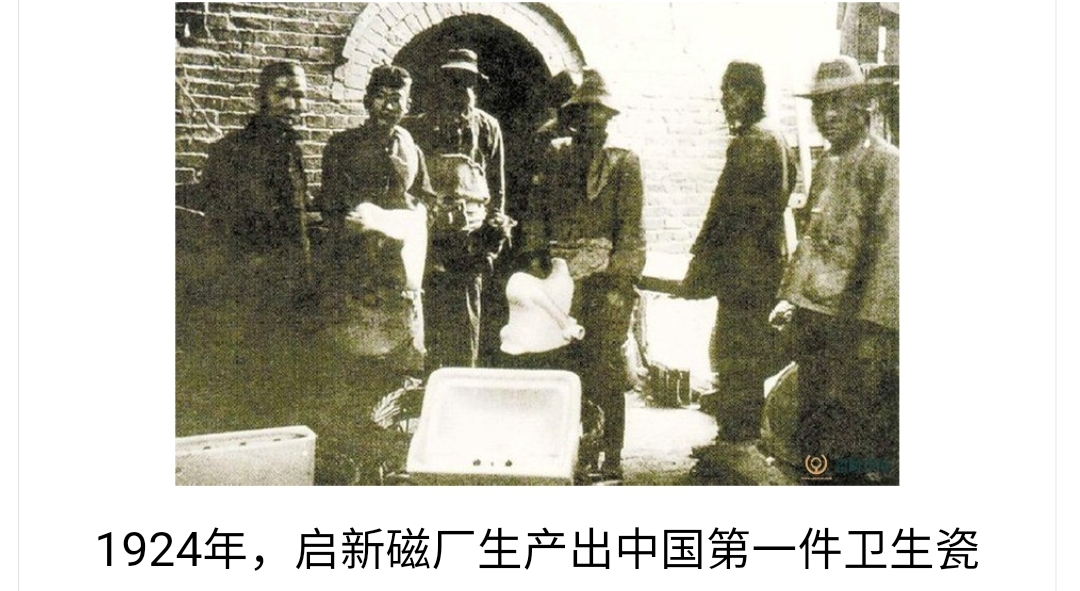
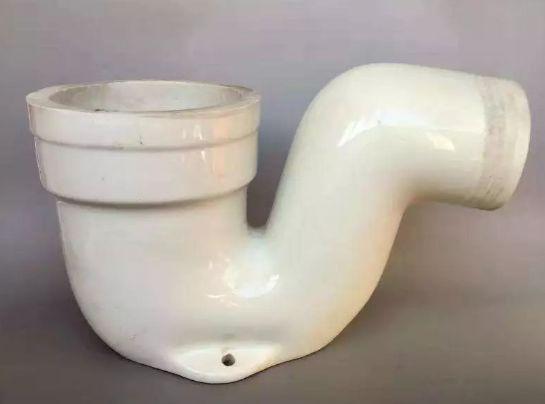
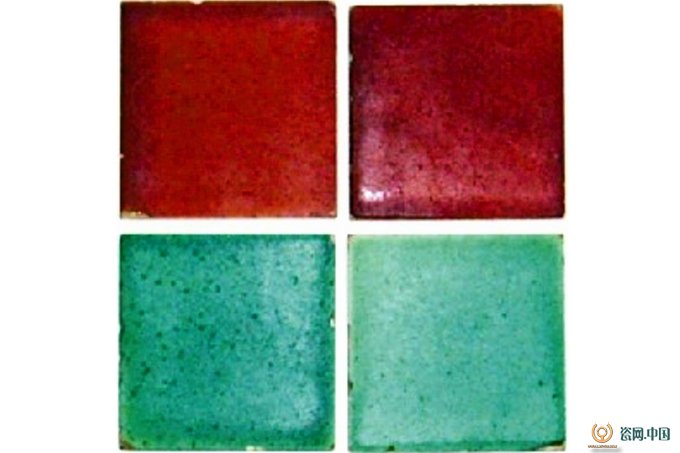
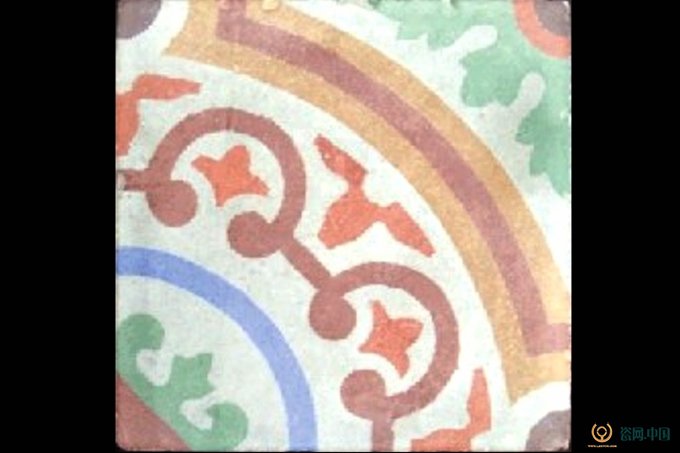
Republican Tangshan (唐山) Porcelain
During the Republican period, Tangshan (唐山) in Hebei emerged as a significant porcelain production center. Dr. Hans Gunther, a German geologist, played a pivotal role in developing the Tangshan porcelain industry. He was appointed Chief Engineer of the Qixin Cement Stock Company in 1906. By 1914, the company had diversified into ceramics production, including floor tiles, pipes, and household porcelain wares. These early porcelain wares, characterized by a rough texture and grayish paste, were derogatorily nicknamed "cement wares" (洋灰瓷).
 |
|
| Wash basin produced by Qixin
Porcelain factory in 1924 |
|
 |
|
| Ceramic pipe fitting produced by Qixin
Porcelain Factory |
|
 |
 |
| Tiles produced by Qixin Porcelain Factory | |
In 1925, Qixin Porcelain Factory (启新磁厂) was established, taking over the porcelain production of Qixin Cement Stock Company under the full management of Dr. Hans Gunther. The entire production process was mechanized using imported European machines. Dr. Gunther improved porcelain quality by blending imported and local raw materials, resulting in finer and whiter paste.
The factory adopted the slip casting method, where liquid raw material (slip) was poured into plaster molds to form vessels. This method produced pieces without the circular concentric marks typical of potter's wheel production.
The potter's wheel thrown circular concentric marks on the interior wall of this Republican period Jingdezhen hat-holder is distinct. |
To accelerate decoration, Qixin Porcelain Factory became the first in China to use transfer print decoration. The motifs, often European in style, were printed on imported paper. These products mainly targeted overseas markets.
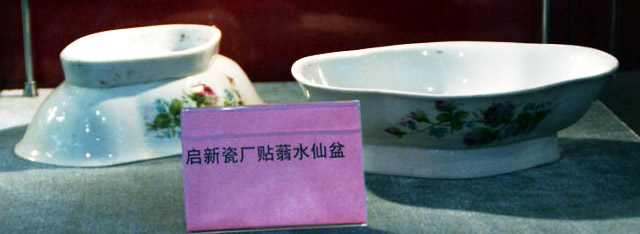
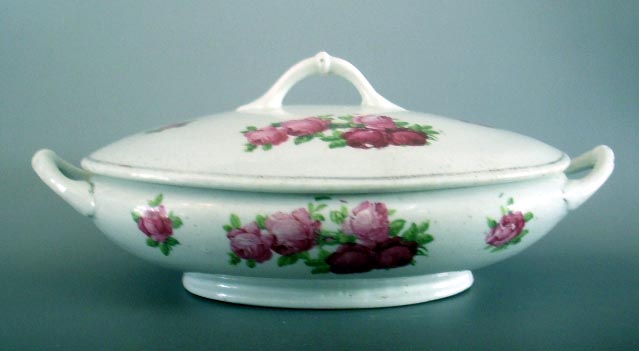
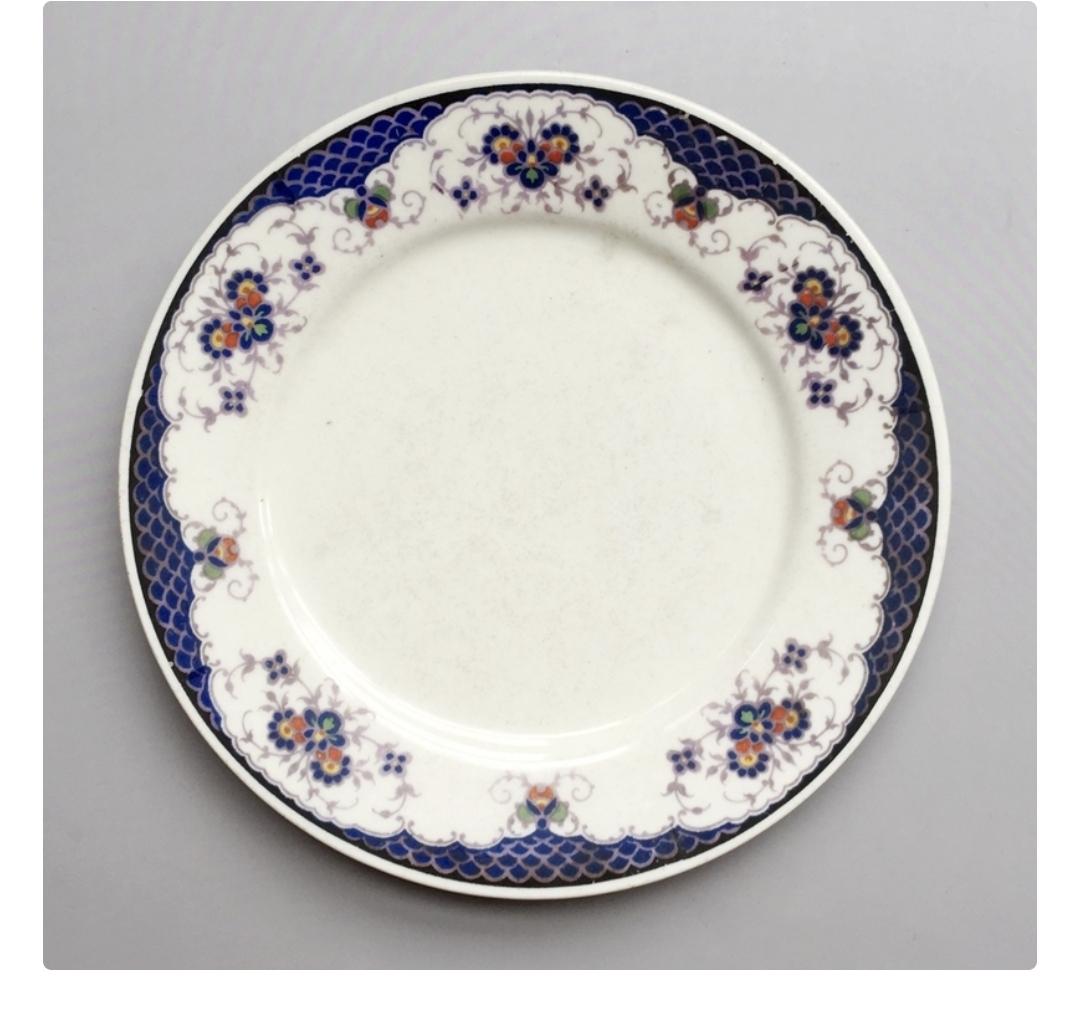 |
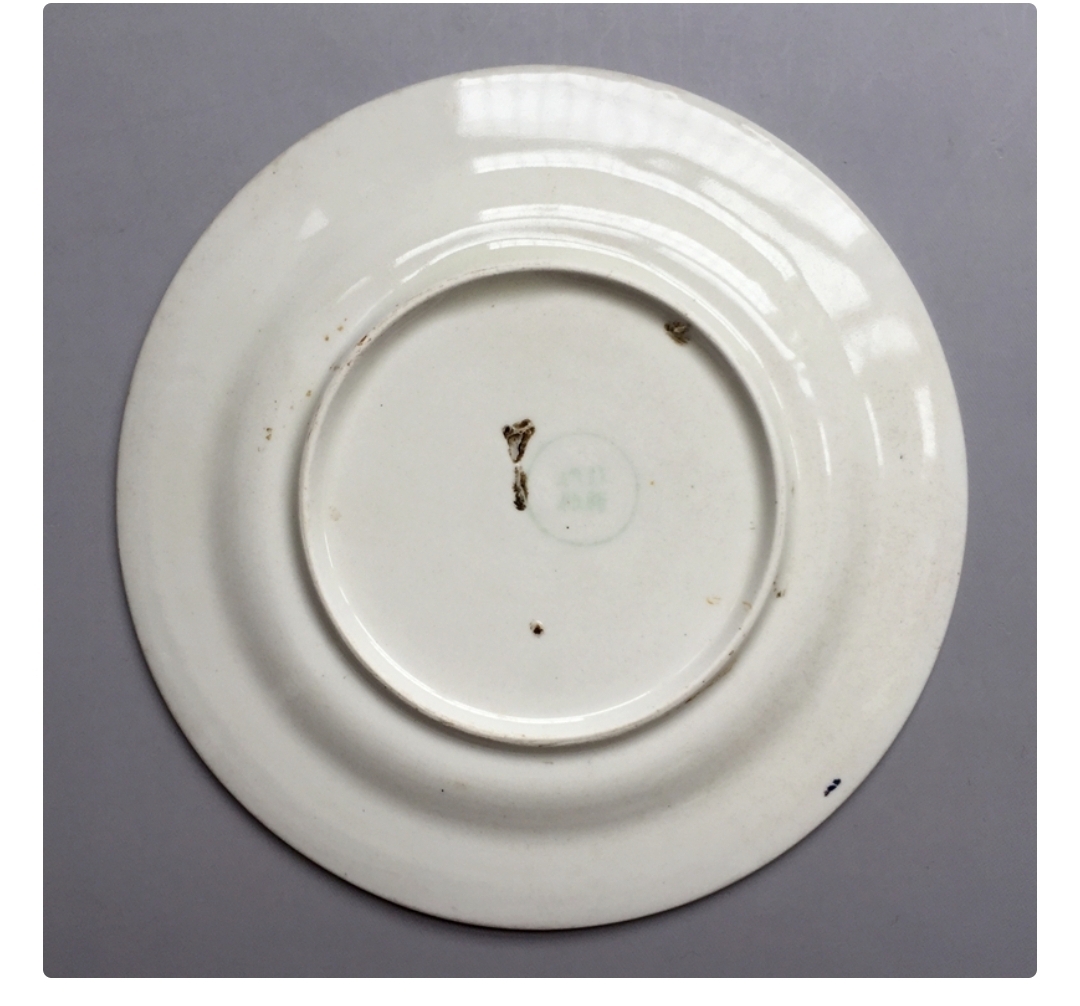 |
|
Vessels decorated with transfer print imported from Germany |
|
For the domestic market, vessels with traditional hand-painted decoration continued to be produced. The style of decoration closely resembles that of Jingdezhen-made ceramics. The Qianjiang style, introduced in the late Qing period, remained popular among domestic consumers throughout the Republican era.
Besides Jingdezhen, many other provincial kilns also produced such vessels, with notable examples from Fujian Dehua (德化), Chaozhou Fengxi (潮州枫溪), and Dapu (大埔) in Guangdong. The decorations typically featured landscapes, birds and flowers, or human figures, often accompanied by poetic inscriptions. (For more on Qianjiang porcelain, please read this.)
The pigments used in these decorations were synthetic, containing metal oxides and silicates. This allowed for a wider range of colors. Visually, the enamel appears thin, with more even coloration. Unlike traditional pigments, these were not locally produced but imported from Europe or Japan. Both overglaze and underglaze techniques were used.
Many vessels produced by the Qixin Porcelain Company can be identified by the "Qixin Ci Chang" (启新磁厂) mark on the outer base. The vessel forms also closely resemble those made in Jingdezhen.
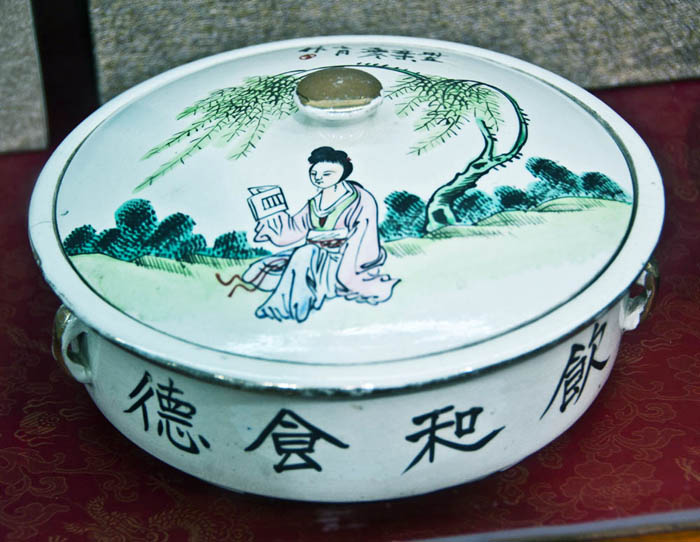
Two Republican Qianjiang style vessels made in Chaozhou Fengxi in Guangdong |
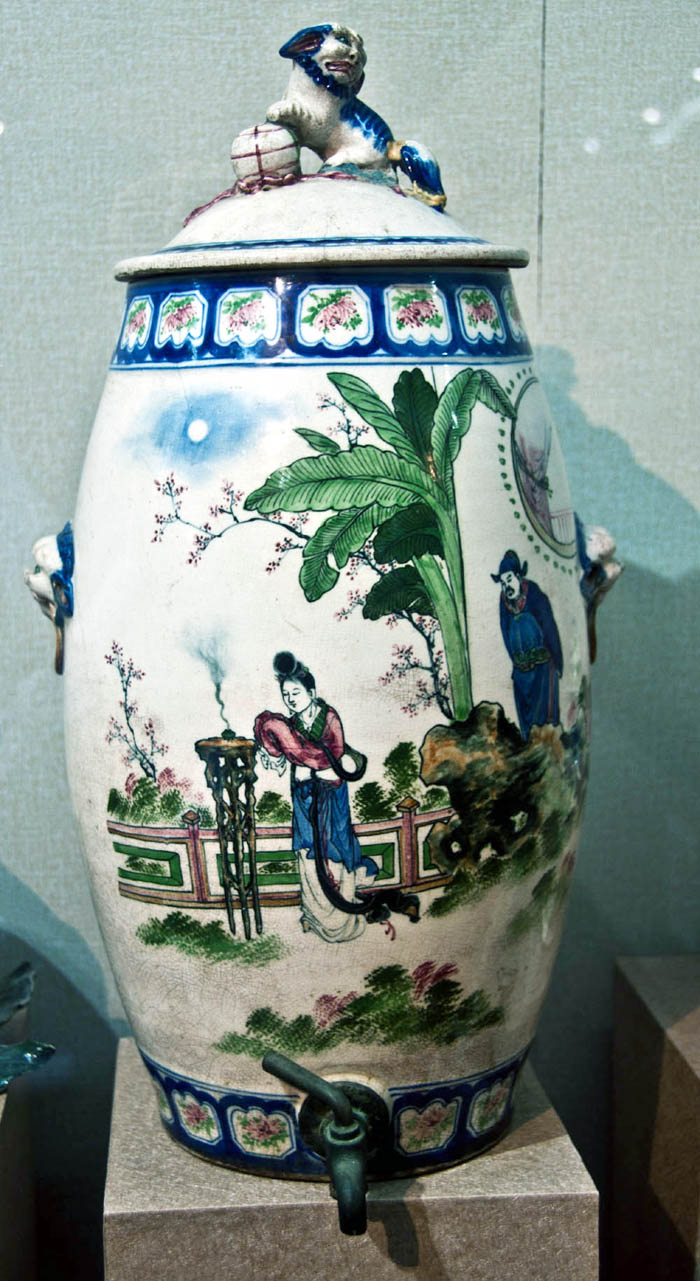 |
|
Republican Qianjiang style vase made in Fujian Dehua |
|
Zhuang Zi Ming (庄子明), a renowned painter of Shanghai tobacco advertisement posters, was recruited to supervise and train personnel in producing hand-painted porcelain. However, the production of such decorated wares ceased by 1937 due to labor disputes and competition, leading to the mass departure of production crews.
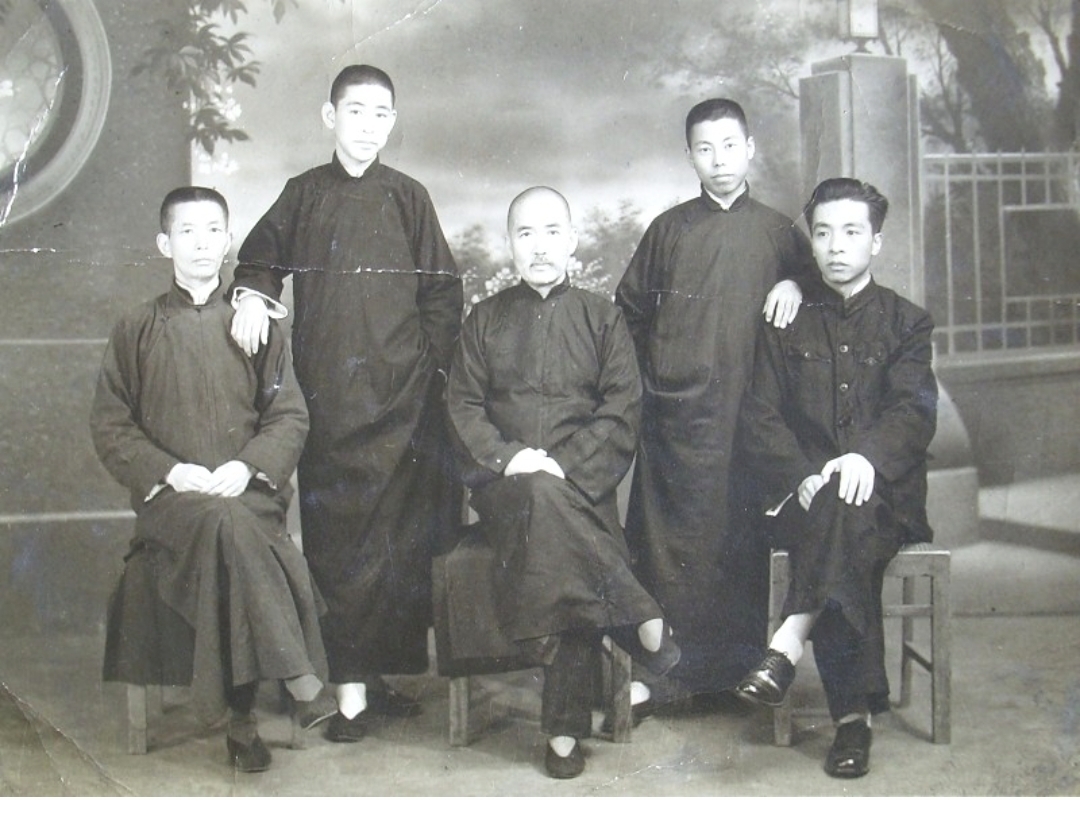 |
| Old Photo of Zhuang Zi Ming sitting (3rd from the left) |
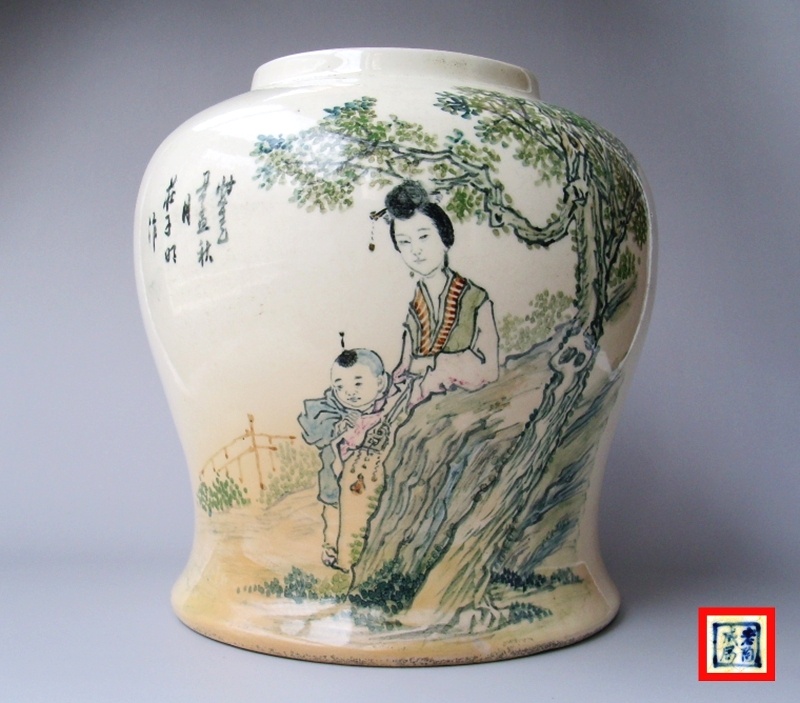 |
| A work by Zhuang Zi Ming |
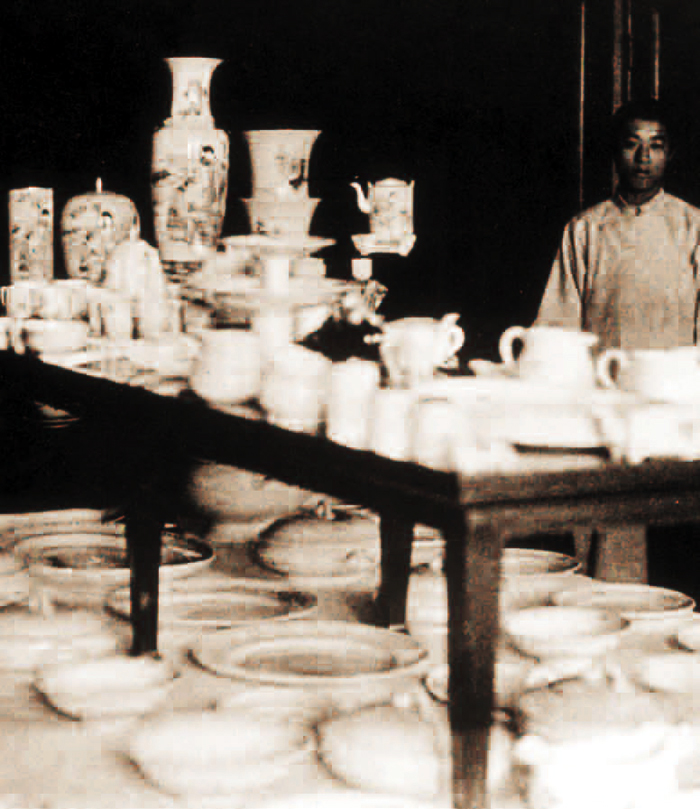
Old Republican period photo of vessels produced by Qixin Porcelain Factory
|
|
|
|
|
|
| Cup with Qianjiang
style landscape and a Qixin Ci Chang mark (启新瓷厂)
|
|
|
|
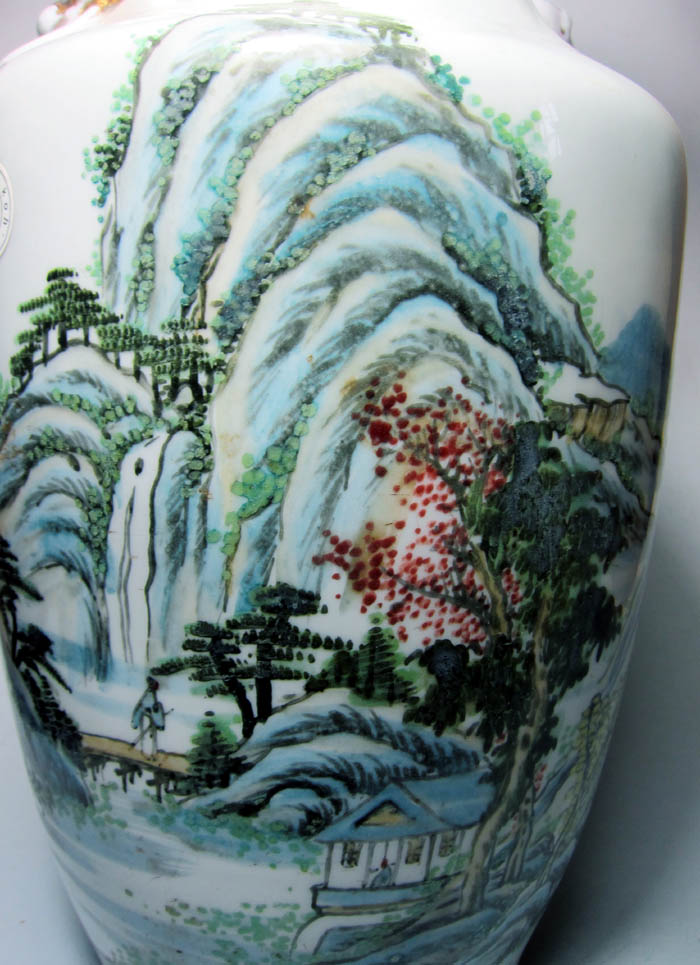 |
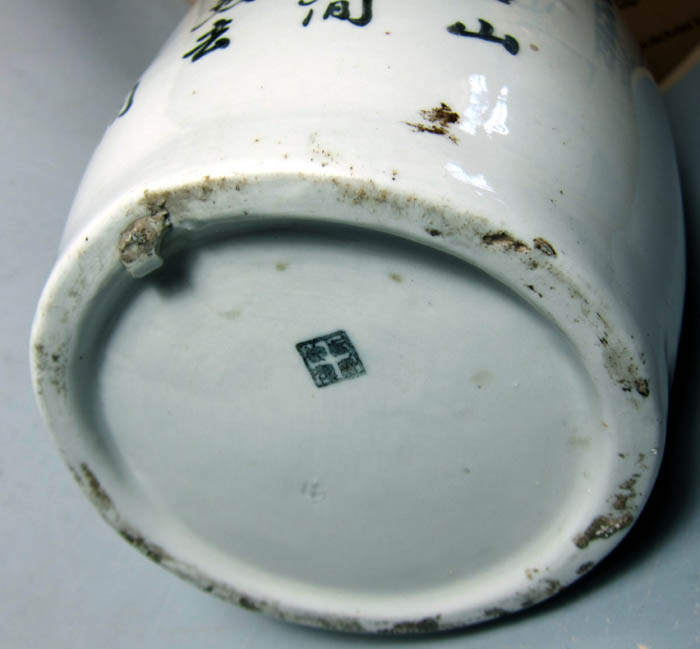 |
|
Qianjiang style landscape with poetic inscription. There is a cyclical date Ding Mao (丁卯) ie 1927 A.D |
|
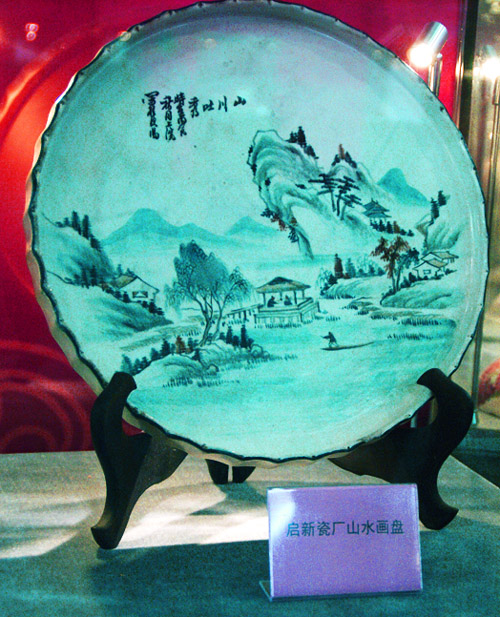
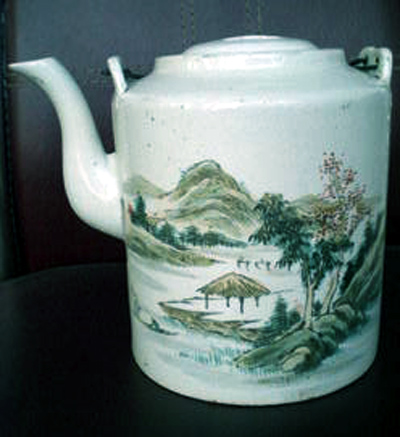
More Qixin Porcelain Factory examples with Qianjiang style landscape
|
|
 |
|
|
This jar is rather interesting. The inscription indicates that it was drawn in cyclical date Yi si (已巳)ie 1929 A.D at Qixin Xuan, most likely name of a workshop in the Qixin Porcelain factory |
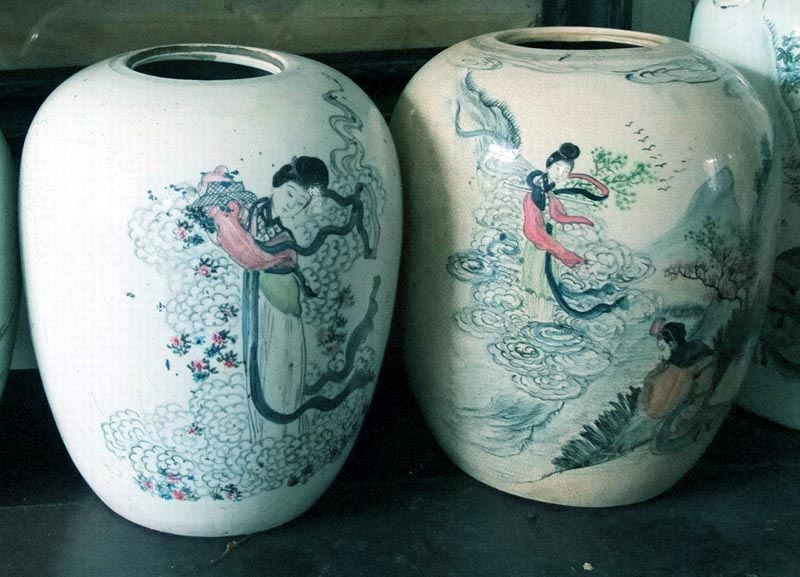
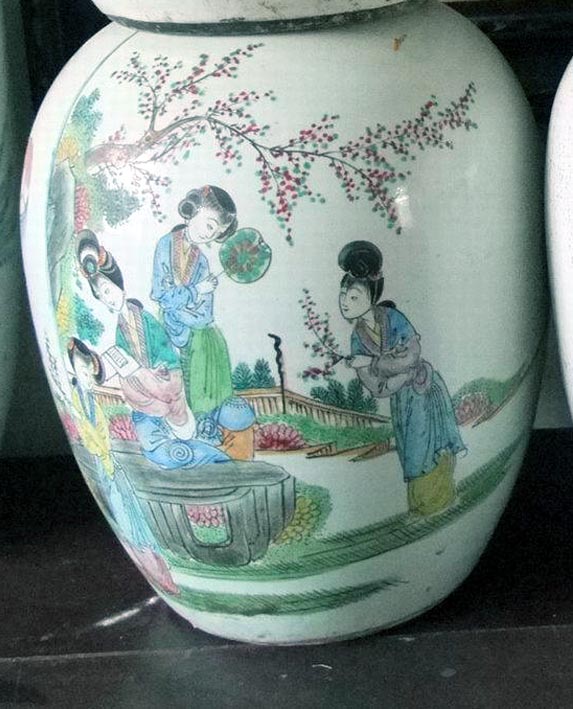
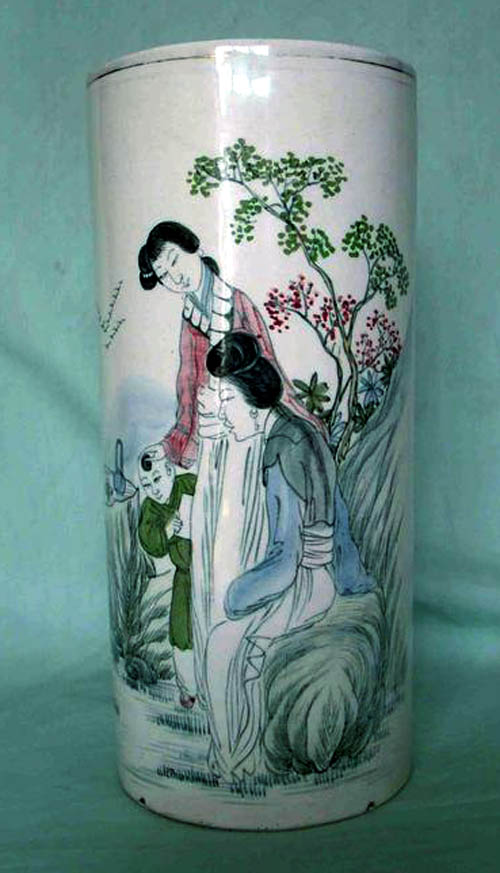
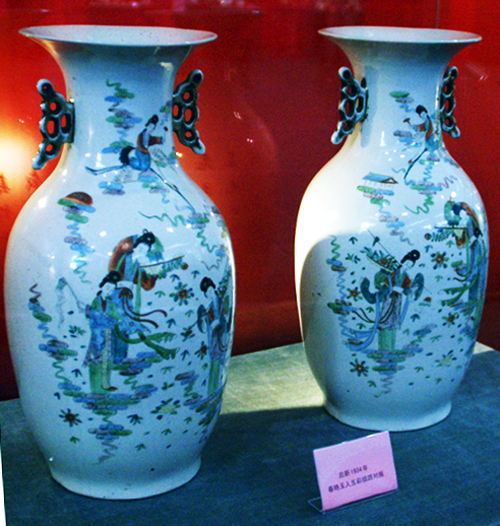
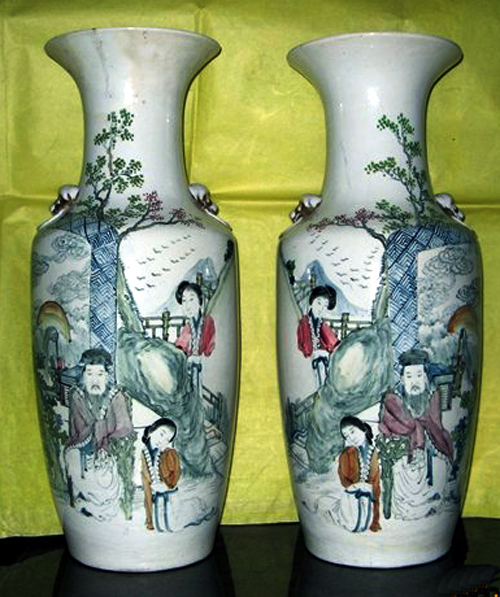
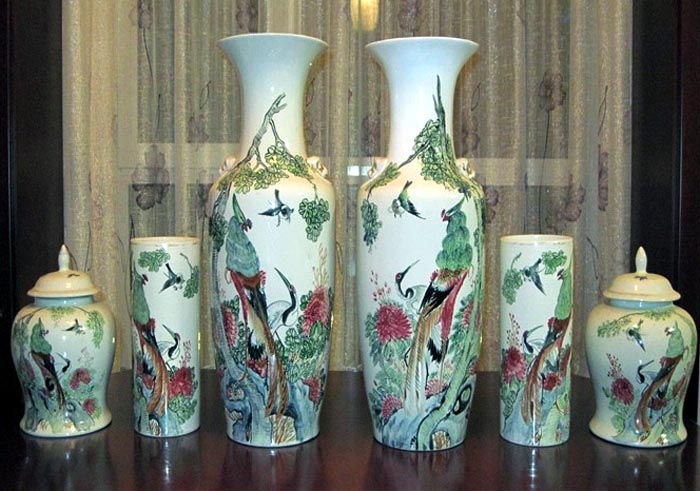
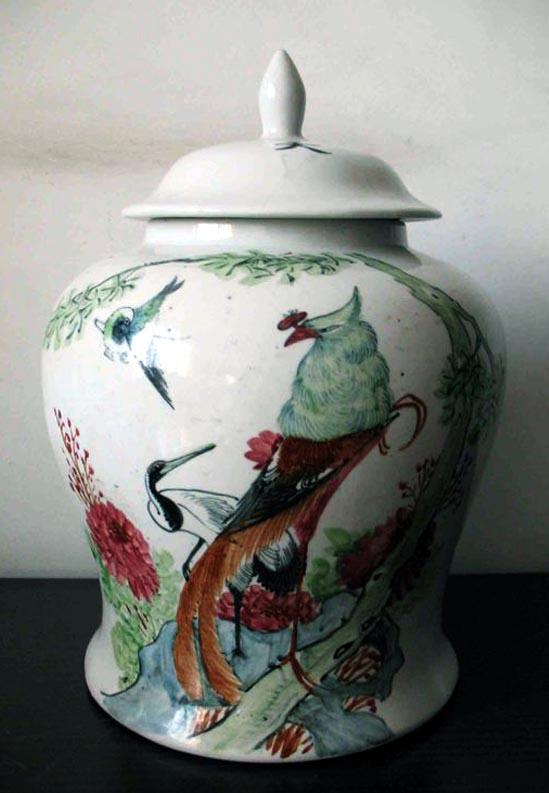
 |
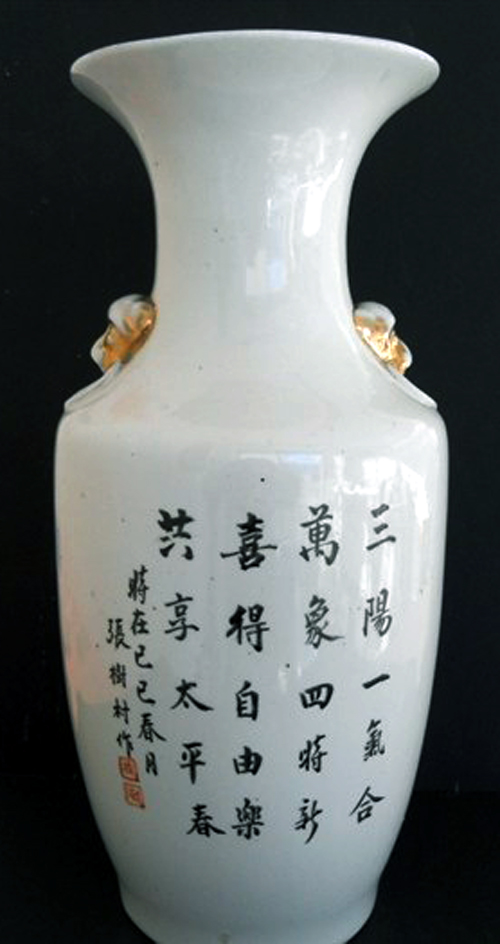 |
|
|
More variety of Qianjiang style decoration produced by Qixin Porcelain Factory |
||
During the Republican period, Tangshan had over 80 porcelain factories. Notable ones included De Sheng (德盛), Xin Ming (新明), and Dong Tao Cheng (东陶成), along with others like 德顺局, 三合义, 广裕昌, 合记瓷厂, 德盛成, and 裕丰瓷厂.
The Republican period marked a significant transformation in Tangshan's porcelain industry. Through technological advancements, innovative production methods, and diverse decorative styles, Tangshan evolved into a prominent porcelain hub. Dr. Hans Gunther's contributions and the involvement of skilled artists like Zhuang Zi Ming played a crucial role in elevating the standards of porcelain production in China. Despite eventual challenges, the legacy of Tangshan's Republican-era porcelain continues to be a testament to the region's industrial and artistic achievements.
Written by: NK Koh (15 Feb 2014), Updated: 21 Mar 2025